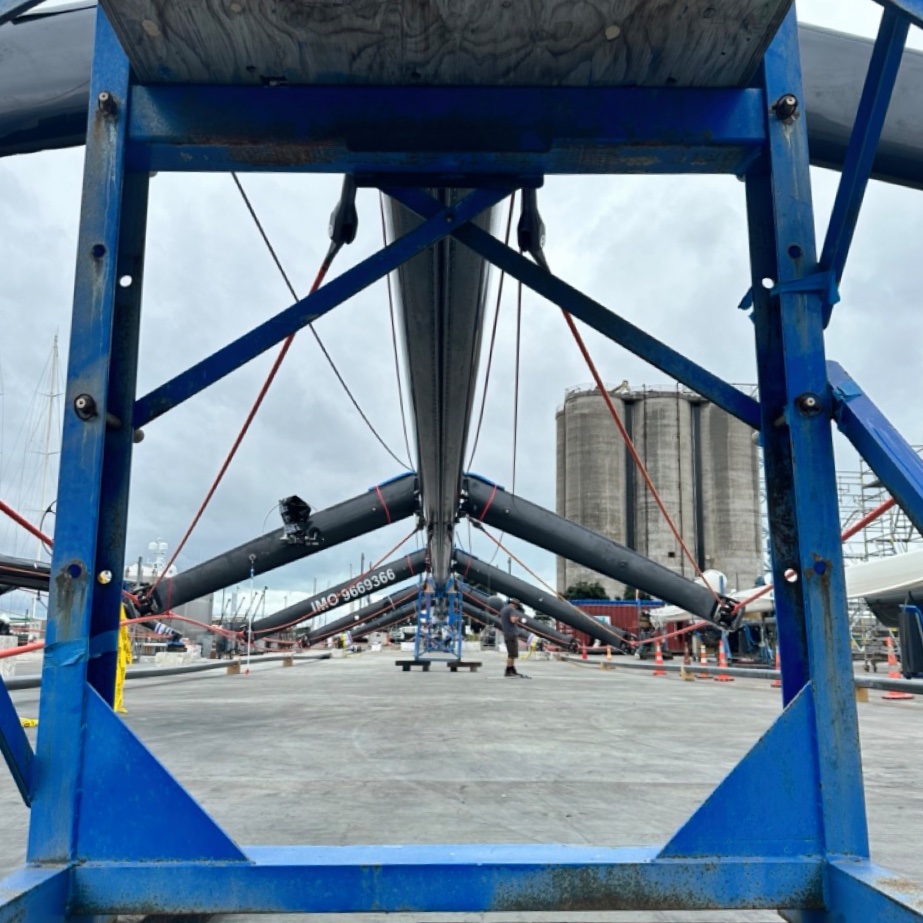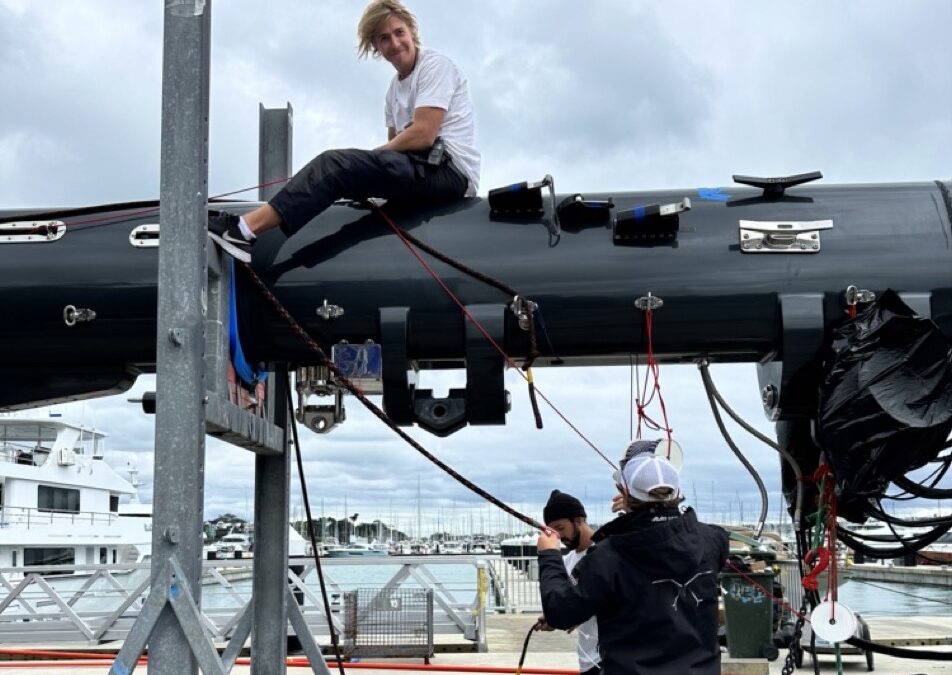Seahawk’s first journey of the Pacific Ocean came to an end in September 2022, after 9 months of cruising the waters of French Polynesia and Fiji.
Arriving in the city of Auckland was new for most of us on board. The cold, rainy weather of the New Zealand winter and the big city lights painted a scenario very different from the one we had gotten used to, in the tranquility and warmth of our previous destinations.
Seahawk’s prime purpose for her visit to Auckland is the run-up to her 10-year anniversary and ABS class certificate renewal. ABS (American Bureau of Shipping) is one of a number of globally recognized Class Societies, and it ensures that the vessel condition meets a long list of standards, that repairs are carried out correctly, and it ultimately certifies to the flag state that the vessel is materially seaworthy and unlikely to cause pollution or other dangers in operation. The boat’s class certificate lasts 5 years (subject to annual inspections). At renewal, the vessel undergoes a detailed and fairly invasive survey inside and out to check the condition of parts that are not normally accessible.
Amongst many other things, the survey includes: measuring the thickness of the hull, an overhaul of the main machinery (to a level depending on the total running hours usually), an inspection of all hull valves that keep the water out, and a thorough inspection of the shaft line.
As a 10-year survey involves extended time out of the water, it is usual to carry out an overall refit of the vessel at the same time. In Seahawk’s case, this meant a full repaint, and the opportunity to remove and overhaul the mast and rigging, which must also be carried out on a similar periodic basis. This project was a major event and would be expected to take a minimum of 6 months to complete, considering no eventualities or last-minute surprises.
The planning began a year in advance. After considering several options, Auckland seemed like the best overall fit for our intended movements and the availability of suitable facilities. Orams Marine was our selected shipyard, and a plan was drawn up to bring the project together.
So come September and there we were, in the City of Sails, ready to get to work. But first things first, masts and rigging had to be removed, and the boat had to come out of the water.

Pulling a Panamax rig from a yacht is no mean feat. The task requires the largest mobile cranes available, and a well-thought-out plan to lift the mast and lay it down on the ground; The combined area the masts need while assembled is around the size of a football pitch. The responsibility for this part of the project was taken by Dave White, of World Spar Services, and assisted by the team at RigPro in Auckland.
The rig pull ended up going by the numbers and was completed in one day. Then, the massive disassembly of the two spars followed to reduce their footprint as quickly as possible.
Shortly after, Seahawk got removed from the water. In the last 3 years, she has been hauled 3 times, each time by a different method. In Italy, she was dry-docked; in Mexico, a Synchro lift was used, and now it was the turn of an 820T travel lift to do the job. Again, the job went smoothly and the boat ended up securely blocked in the corner of Orams’ hardstand area ready for scaffolding and tenting.
And now, the real work begins.
If you would like to know more, dive instructor and videographer Righardt made the following videos to document the process. Enjoy!

